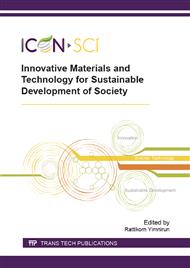p.139
p.143
p.147
p.151
p.155
p.159
p.163
p.167
p.171
Optical Microarray Grating Biosensors
Abstract:
An optical biosensor based on a grating to be utilized for the detection of DNA target molecules was fabricated by photolithographic techniques. The sensor surface implements a grating to create a low effective refractive index platform via the combination of Si3N4 and SiO2 which allows the detection via changes of the reflectivity spectra. The active surface carried a layer of probe biomolecules for specific binding of the target DNA. Immobilization of the probe molecules was carried out via streptavidin using biotin modified ssDNA complementary to the target ssDNA. When molecules attached to the surface of the device, the position of the reflectance spectrum shifted due to the change of the optical path of light that is coupled into the grating structure. The extent of the wavelength shift of the peaks could be used to quantify the amount of materials bound to the sensor surface thereby allowing detection of the surface modifications as well as the quantification of the DNA analyte. The advantages of this device are that it works with a small sample volumes (few microlitres), are integratable in micro array type of setups and can be used at room temperature.
Info:
Periodical:
Pages:
155-158
Citation:
Online since:
October 2015
Authors:
Keywords:
Price:
Сopyright:
© 2015 Trans Tech Publications Ltd. All Rights Reserved
Share:
Citation:


